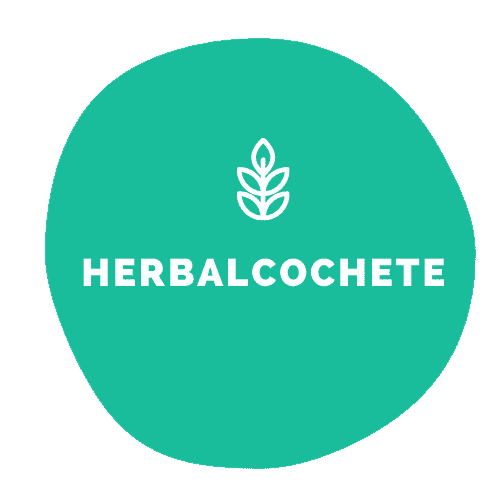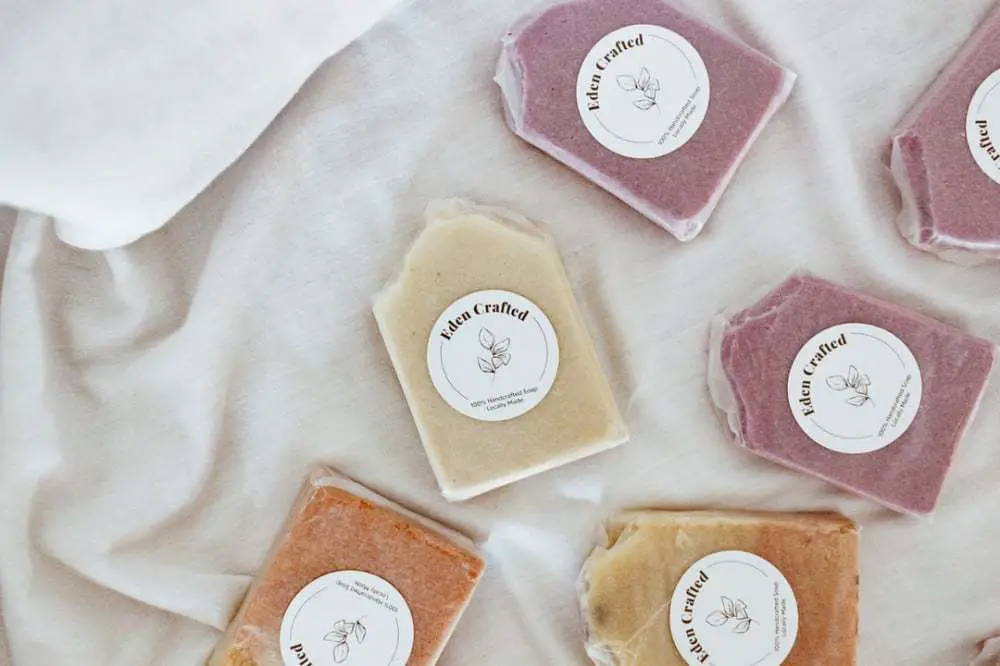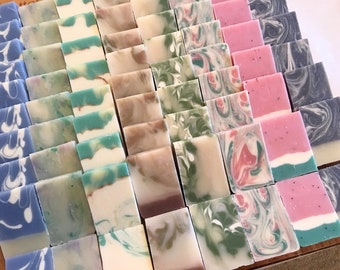Do you love natural soap, but it lasts less than one week? It doesn’t make enough lather? It stings your skin? Want to learn how do you use handmade soap? This post will tell you everything about how you should use handmade soap in your shower.
Table of Contents
- There’s a Difference
- Natural Soaps and Shelf Life
- In Your Shower
- How To Make Your Soap Last Longer
- Related Posts
There’s a Difference
You are probably wondering: “What the heck? You need instructions to use a soap bar?? You just get into water and rub it on yourself to lather!”. Well. Yes and no. Natural soap bars are different from commercial ones, as commercial soap bars are especially made to last longer (that is why they have so many chemicals), foam more, be prettier for a longer time. Natural soap bars are not. Natural soaps are a bit different and should be used diferently.
Natural Soaps and Shelf Life
- Natural soap bars are not made to last years, therefore they have a shorter “best by” time (around one year or two, depending on ingredients’ freshness and quality) and… they dissolve fast in water!
- Natural soaps have natural ingredients and a natural way to keep them from spoiling: relatively high pH, and no water content. See this article for a very comprehensive explanation about it. My recipes also have always an anti-oxidant to prevent soap bars to go rancid.
- Still, if your soap bar gains a bad smell or big dark orange spots, you should discard it. You can use it, it probably won’t do any harm, but why risk using a bar of soap with potential fungus, rancidity or bacteria in it? If you make your own handmade soaps, it is very important to use fresh ingredients, especially oils, to further prevent these problems to happen.
- The best way to ensure that your soap bar remains as germs-free as possible is by keeping it clean. One way to do that is to rinse it off with running water before cleaning yourself to wash away any of the germy “slime” that may have collected on it since the last time you used it.
In Your Shower
Most of these tips were taken from my personal experience and this website.
- If you wish your soap to last longer, lather yourself without running water, slowly and patiently. Natural soap inside water dissolves fast. Take advantage of the shower or bath time to slow down and relax.
- The most recommended way to use soap in the shower is to wash from top to bottom. Start with your face and neck then work your way down. This way, you’ll ensure a total rinse.
- Be sure to shower with warm water. Avoid hot water: it can dry your skin, and even shorten the lifespan of your soap bar.
- Washing your face: make sure your face is wet and well-rinsed before you wash it with soap. Your hands should be clean as well. Work a nice lather and apply it to your face with your hands. Gently massage it into your skin with a circular motion for about 30 seconds.
- Some bar soaps might feel drying to the skin. While soap is not exactly a lotion, the soap recipes I add in this blog all have 5% superfat and therefore, are all conditioning. After swtiching from store-bought shower gels to handmade bar soaps, I have noticed that my skin was less dry after each shower and needing less body lotion. Now, after one year and a half of only using soap, I’ve never felt my skin dry (apart from face), it feels like the natural skin oils are always preserved, keeping my skin properly hydrated.
- Does your soap sting in some areas? Don’t wash your armpits and intimate areas directly with soap. Instead, work a generous lather and use your hands only to wash those areas. If it still stings, consider using this Homemade Intimate Soap (not really soap, actually, and that’s why it won’t sting).
- Washcloths and loofahs often remain moist for long periods, which promotes the growth of mold and bacteria. You will be transfering that mold and bacteria to your bar of soap – and skin! – the next time that you shower. Most hygienic way to wash yourself is to use your hands only. At least, use a clean washcloth (straight from the drawer) only once, then throw it to the laundry bin after you shower.
How To Make Your Soap Last Longer
- Natural soap bars tend to soak up water. If you leave them in or right over a pool of water, it will tend to dissolve, and become very soft, more like mush than a hard soap bar.
- Use a soap dish with good ventilation below and water drain. Ideally, keep your bathroom as dry as possible. In alternative, if you can, keep your soap dish near a window, or in a dry place, to be able to fully dry between showers.
- You can also use a sponge underneath your soap, it will absorb the soapy liquid underneath. They are usually called soap mats.
- Another alternative is to use a soap saver bag – this is what I use. It is a small netted bag you can put your soap into, with lots of ventilation. It will allow your soap to dry faster, and will prevent to be in a pool of water. You can even wash yourself with it. The soap will lather really nice and the bag provides some exfoliation. Make sure that after your shower you rinse it well, and hang it to dry. Wash your saver bag regularly in the washing machine, with cold water.
- If you want your soap to last longer, do not share it with other family members. There’s no sanitary reason for it: it’s just that with many people using the same soap, it will never be able to dry, and will dissolve faster and last less time. Give a bar of soap for each person in your home.
From my personal experience, I have been using my handmade cold process soap under hot running water, and I love to lather myself like that. I used to keep it in a high place in the shower, in a tray with a lot of air ventilation, and it was normally dry in the next day. Now I use a soap saver bag, it lasts even longer. My 90g soap lasts from 3 weeks to 1 month, roughly, and longer if inside a soap saver bag.
I hope you enjoyed this post. Feel free to leave a comment or pose a question using the comments field below.
Related Posts
- Buy Handmade Soap:
- Make Your Own Handmade Soap










Hey great article. At first glance I was definitely like a handmade soap is obviously the same as a usual soap, how else are you ment to use it. But then as I read through I totally understand why handmade soap should be looked after differently.
For me the shelf life is a major difference and a setback in a way. Like you stated hot water should be avoided, it doesn’t really do much good apart from providing you with a little warmth and calmness.
Hello Sariyah and thanks for your comment.
Hope you liked to know more how to use about handmade soap. If shelf life is a problem for you, you should probably avoid soft soaps, or in other words, look for soaps made with salt, those are known to last longer.
Or… purchase a soap saver bag, they help make a lot of foam and you use less soap for each shower. They also help keep the soap dry.
Cheers,
Sofia
Hi Sofia
Right from landing on your post, I wondered if there’s a new thing to learn about handmade soap. But really, you threw me off balance with these exciting tips.
I have always preferred going for items made from natural ingredients. Moreover, over time, I react to bar soaps, deciding afterward to stick with natural bar soaps.
But like you said, it doesn’t last long like the commercial ones.
Reading your articles now, I just realized I have been doing it the wrong way.
I will be applying these tips afterward
Thank you.
Hello Muslimah, thanks for your nice and warming comment.
Commercial soaps have too many synthetic ingredients that might scare you. It’s no wonder that many of us react badly to them. If you’re healthy, lucky, and have no skin issues, at most it will only dry your skin. But who knows what is doing to us long term?
Not wishing to delve about this subject (I speak about it on my blog over and over 🙂 ), yes, you do need to know how to use handmade soap to profit the most out of it.
Handmade soap nowadays remain pretty much the same as in the past, probably with the advantage that we have access to pure lye (caustic soda) and the soap is a bit more effective and of better quality than before. I can tell you that, when I’ve started making handmade soap 2 years ago, I was thrilled to realize I was making good quality soap without much experience. I was proud to give my own soaps as gifts in Christmas 🙂
And there is an increasing awareness about the benefits of using handmade soap – and several “add-on” products are showing up, like soap mats, soap bag savers (which I use in shower and love), to improve its usage.
My goal is actually to empower people, to give a choice: purchase handmade soap or make it yourself at home, as you *can* do it, just like our ancestors did around 100 years ago. You simply have better conditions and access to better products.
Hope you continue to enjoy handmade soap!
Cheers,
Sofia